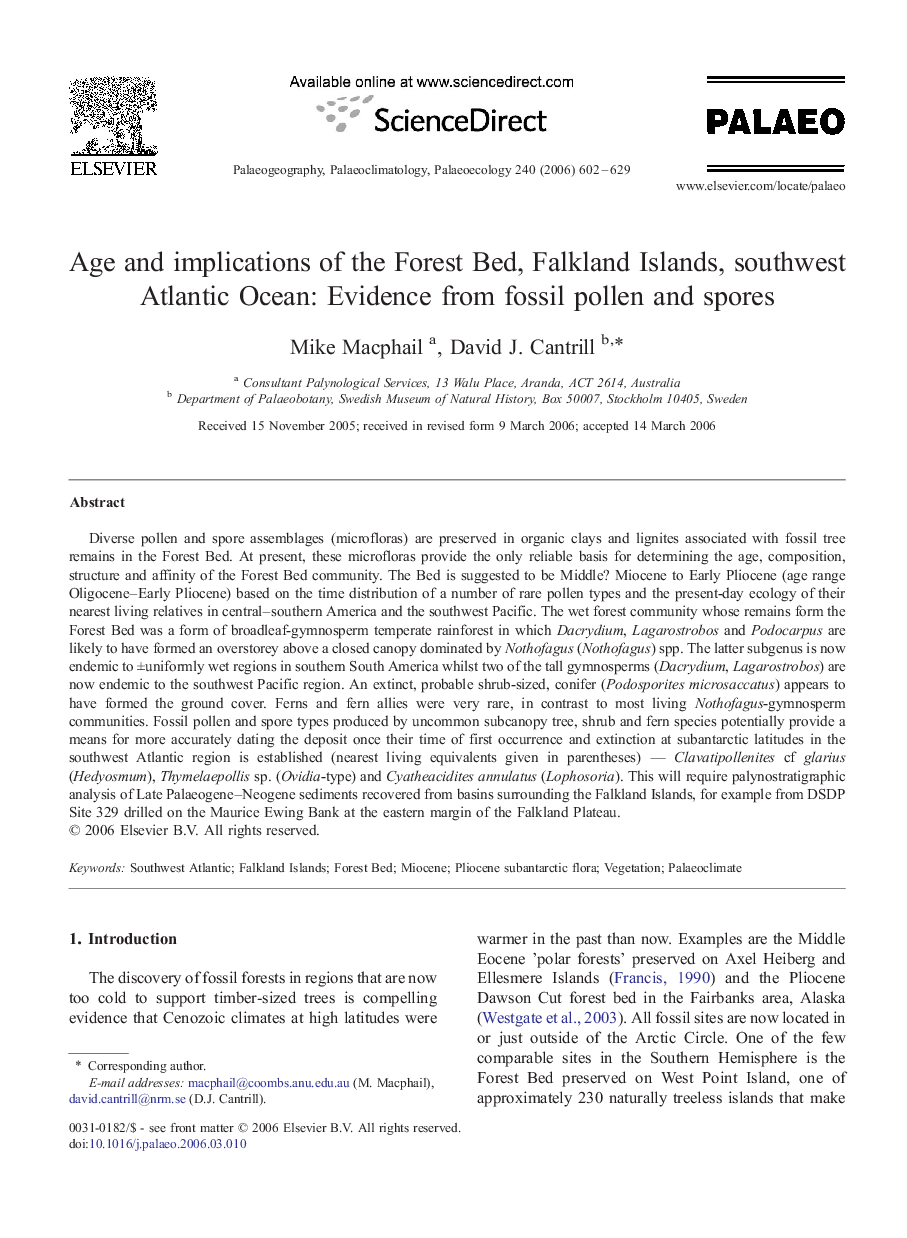| کد مقاله | کد نشریه | سال انتشار | مقاله انگلیسی | نسخه تمام متن |
|---|---|---|---|---|
| 4469277 | 1622365 | 2006 | 28 صفحه PDF | دانلود رایگان |

Diverse pollen and spore assemblages (microfloras) are preserved in organic clays and lignites associated with fossil tree remains in the Forest Bed. At present, these microfloras provide the only reliable basis for determining the age, composition, structure and affinity of the Forest Bed community. The Bed is suggested to be Middle? Miocene to Early Pliocene (age range Oligocene–Early Pliocene) based on the time distribution of a number of rare pollen types and the present-day ecology of their nearest living relatives in central–southern America and the southwest Pacific. The wet forest community whose remains form the Forest Bed was a form of broadleaf-gymnosperm temperate rainforest in which Dacrydium, Lagarostrobos and Podocarpus are likely to have formed an overstorey above a closed canopy dominated by Nothofagus (Nothofagus) spp. The latter subgenus is now endemic to ±uniformly wet regions in southern South America whilst two of the tall gymnosperms (Dacrydium, Lagarostrobos) are now endemic to the southwest Pacific region. An extinct, probable shrub-sized, conifer (Podosporites microsaccatus) appears to have formed the ground cover. Ferns and fern allies were very rare, in contrast to most living Nothofagus-gymnosperm communities. Fossil pollen and spore types produced by uncommon subcanopy tree, shrub and fern species potentially provide a means for more accurately dating the deposit once their time of first occurrence and extinction at subantarctic latitudes in the southwest Atlantic region is established (nearest living equivalents given in parentheses) — Clavatipollenites cf glarius (Hedyosmum), Thymelaepollis sp. (Ovidia-type) and Cyatheacidites annulatus (Lophosoria). This will require palynostratigraphic analysis of Late Palaeogene–Neogene sediments recovered from basins surrounding the Falkland Islands, for example from DSDP Site 329 drilled on the Maurice Ewing Bank at the eastern margin of the Falkland Plateau.
Journal: Palaeogeography, Palaeoclimatology, Palaeoecology - Volume 240, Issues 3–4, 19 October 2006, Pages 602–629